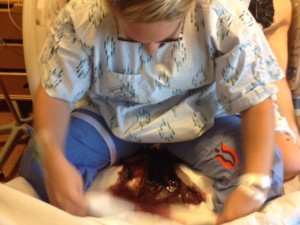Municipal Chief of Maternal Health
Chiapas, Mexico
‘This type of activity and learning is interesting. Especially because we are able, through the live experience and through the use of a simulated patient, to strengthen our knowledge and more importantly to improve our sensitivity. A book cannot bleed a book cannot scream, a book cannot cry-out, a book cannot get complicated.’
OB/GYN and State Trainer
Chiapas, Mexico
‘The program is important because it changes attitudes. We have had to work and fight against the bad habits we have formed over the years. I believe that a way to improve and make lasting changes is through the adoption of the PRONTO model.’
Minnie Wanjira Kibore, BMChV MMed
University of Washington Technical Advisor for the Medical Education Partnership Initiative (MEPI) program based at the University of Nairobi, Nairobi, Kenya
‘We have used the simulation equipment in the PRONTOpack for training HCW in health facilities all over Kenya since 2012. The PRONTOpack is a portable, low-tech, low-cost simulation pack that can be used in all settings to simulate emergency obstetric and neonatal care (EmONC) scenarios for learning. The simulation equipment is easy to use, has very few elements that require replenishing and needs minimal training to utilize. The PRONTOpack has enabled us to take simulation training in EmONC to the health care worker in the smallest, most remote health facility in Kenya. It has been a wonderful experience, thanks to PRONTO!’
Amy Turpin, RN and Nancy Hooge, RN
Clinical Nurse Educational Team, Sheridan Memorial Hospital, Wyoming USA
 When we are doing team training for postpartum emergencies with nurses, physicians, aides and ancillary staff that are very experienced, the manikin model just doesn’t seem to create an environment that is as real as having an actress that is fully responsive to the clinicians exam and questions. That is why we chose to incorporate the PartoPants into our annual Women’s Health skill lab on post-partum hemorrhage. The simulation modality of having a live actress wearing pants that were capable of an exam and bleeding brought the emergency to life and allowed our clinicians to buy into the concept of in-situ simulation (simulation right on the unit). When we were completed we were able to discuss clinicians reactions to the emergency, the protocol for managing the post-partum hemorrhage, the process to receiving O-negative blood through our blood bank, where each piece of equipment was located strategically in the scenario, the “patients” (actress’) thoughts on her treatment and their communication to her, and the teamwork, collaboration and communication that took place with each clinician during the emergency. This type of learning is key to keeping our clinicians up to date with changes in process and treatment and to building better teamwork and communication skills.. These pants make the simulation real, interactive and very believable for team training!
When we are doing team training for postpartum emergencies with nurses, physicians, aides and ancillary staff that are very experienced, the manikin model just doesn’t seem to create an environment that is as real as having an actress that is fully responsive to the clinicians exam and questions. That is why we chose to incorporate the PartoPants into our annual Women’s Health skill lab on post-partum hemorrhage. The simulation modality of having a live actress wearing pants that were capable of an exam and bleeding brought the emergency to life and allowed our clinicians to buy into the concept of in-situ simulation (simulation right on the unit). When we were completed we were able to discuss clinicians reactions to the emergency, the protocol for managing the post-partum hemorrhage, the process to receiving O-negative blood through our blood bank, where each piece of equipment was located strategically in the scenario, the “patients” (actress’) thoughts on her treatment and their communication to her, and the teamwork, collaboration and communication that took place with each clinician during the emergency. This type of learning is key to keeping our clinicians up to date with changes in process and treatment and to building better teamwork and communication skills.. These pants make the simulation real, interactive and very believable for team training!





